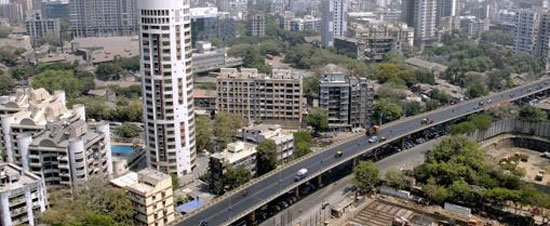Affordable housing policy in Mumbai tweaked to boost builders
After facing a lot of opposition from real estate developers, the state government is implemented the affordable housing policy in city, which stipulated that certain portion of the plots will be kept to build low-cost homes free of cost.
This amendment was proposed by the urban development department by stating that real estate builders no longer have to carve out more than 20 per cent of their plots for public housing. Instead of that they can construct the cheaper tenements anywhere within the same administrative ward to cater the need of affordable housing in the city. But Housing experts questioned, the move is pointing out not many builders have plots in the same ward. . “Will developers be forced to buy another plot to construct these tenements?” asked industry insiders. In notice it was issued on Monday that, the government offered 50% free floor space index (FSI) to all real estate developers to build tenements on alternative plots in the same ward.
But real estate builder are in the mood to oppose this move because the Slum Rehabilitation Authority (SRA) provision already allows them to provide tenements in faraway wards. The mandatory 20 per cent affordable housing scheme will also apply on housing society redevelopment projects where the existing flats are less than 600 sq ft. If the existing flats are on the area more than 600sq ft, so real estate builders have to construct the additional tenements but need not hand them over to the state housing authority, Mhada. “It will be constructing either in a separate block or in a separate wing in the same building and allotted to the housing society for use as ‘service quarters’,” indicated the notice. This may complicate the certain things, as it will lead to tussles among housing society members on who should be allotted these tenements,” stated by the member of a housing society. So the department has proposed a 300 per cent premium on the “applicable rate” to be paid by the society if these service quarters are sold to outsiders.
The state government has clarified that 20 per cent for affordable housing will not be applicable to redevelopment projects for old and dilapidated buildings, clusters, slums, Mhada colonies and on defunct industry land. In these schemes more than 20 per cent of the basic zonal FSI is already utilized for low cost housing, it said. In Mumbai lack of affordable housing has reached to a crisis point as public agencies such as; Mhada able to build around 2.8 lakh tenements in the past 15 years. In past two decades SRA has provided 1.6 lakh tenements, a report released by NGO Praja in December 2014, showed that different public agencies such as; MMRDA, Mhada and SRA have been able to provide around 3.1 lakh homes between 1995 and 2014, of which 1.1 lakh tenements are still under construction.
Neera Adarkar, a architect and urban researcher stated that an average salaried person can no longer afford to buy a home in Mumbai. “A few years before during recession, when real estate developers could not sell their luxury apartments, they divided them into four parts and started selling homes of 500 sq ft each. This is not what affordable housing is about,” she said. In 2013, the report by Knight Frank (a global realty consultancy, listed Mumbai) indicated that the most unaffordable housing market in the country with 29 per cent of its under-construction dwelling units exceeding the Rs 1crore mark. We all know that in Mumbai the relentless price rise and higher concentration of premium projects had limited the purchasing ability of home buyers, it added.
Pankaj Kapoor, who is a property researcher in farm Liases Foras, stated that, “Affordable homes are only available 50km away from Mumbai, but even in these far-flung regions, 60 per cent to 70 per cent of the homes or flats or apartments have been sold to investors and not to the end-users”




